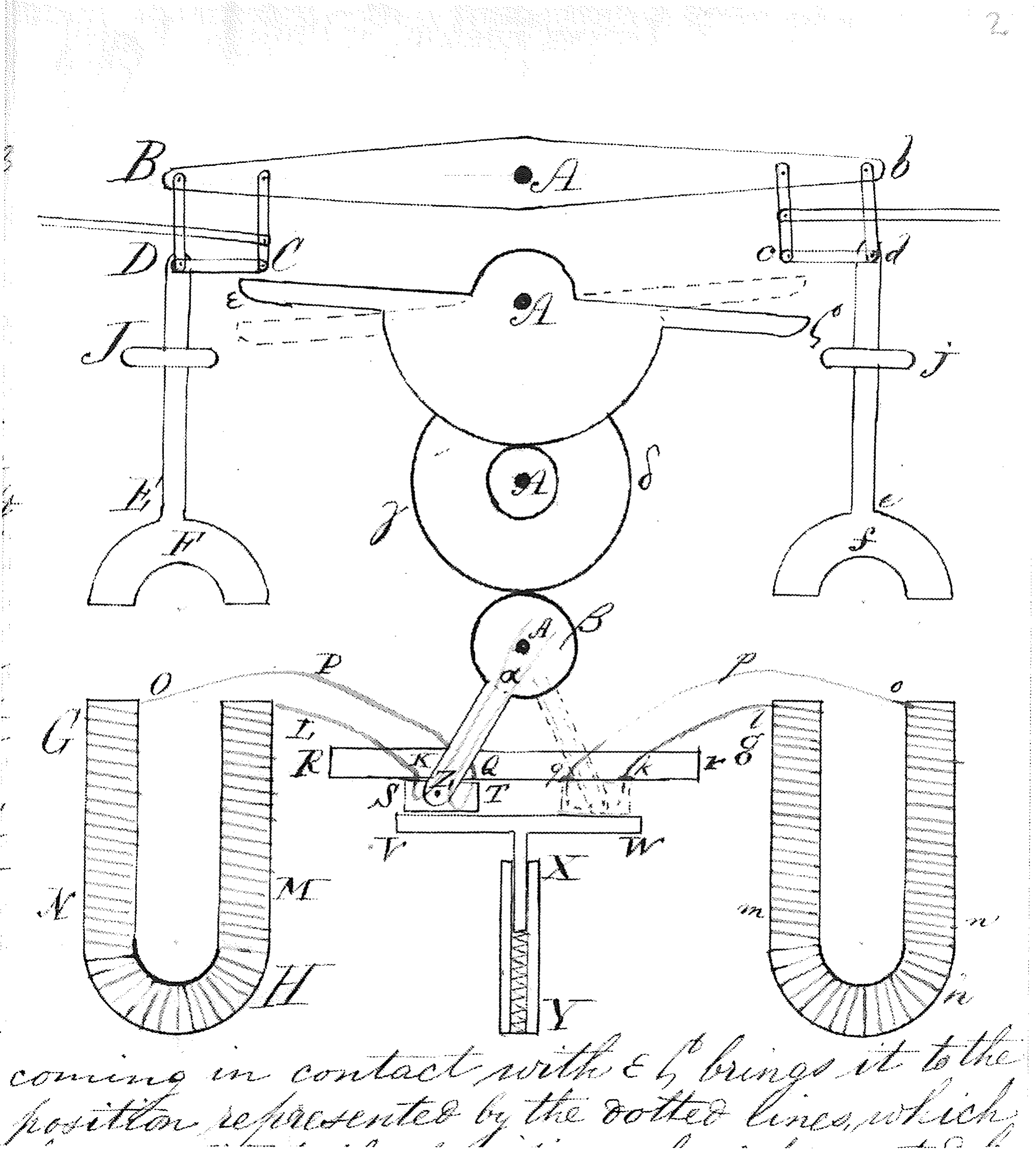William Arthur Slade to Faraday 4 December 18571
Upper Easton, | St Philips, | Bristol, 4 Dec, 1857
M. Faraday, Esq F.R.S. | &c &c &c | London
Dear Sir,
Your note came to hand in due course, and I beg to thank you most sincerely for the trouble you have taken. Perhaps you will oblige me by glancing over the annexed very rough sketch of a Magneto Electric Machine: I fear that my anxiety not to tresspass too much on your time has, without attaining its object, prevented my giving a very clear description of its construction. Allow me to add that, in case there is any defect in the machine, I feel sure I could remove it if I only knew where it existed.
Your obedient servant | William Arthur Slade

AAAA are fixed pivots.
BA is a beam, to be connected by a crank with the flywheel of the engine.
BC & bc are systems of bases producing a parallel motion (as in the steam engine)
DE & de are bases to which are appended F & f pieces of iron to be attracted by GH & gh when GH & gh (alternately) become magnetic.
J & j are fixed supports through which DE & de move.
KLMNOPQ & klmnopq represent wires, coiled round the pieces of iron GH & gh, and brought to KQR & q where they terminate in small discs. These lines as well as those representing the course of the wires which bring the Electric currant from the battery are in red
Rr is a fixed block on the outside of which the four discs terminating the coils of wire appear.
ST is a block carrying on its surface (in such a position as to come {alternately} in conjunction with the discs terminating each coil) the extremities of two wires coming respectively from the poles of a battery ST is pressed against Rr by the table
VW which is supported by a spring within
XY a tube in which the bar supporting WX moves freely. The block ST is moved from its present position to that represented by the dotted lines, by the motion of the bar
Zα, which is fixed to the cogged wheel
αβ, connected by the cogged double wheel γδ with the semicircle fixed to the bar εζ.
When in the position represented G.H. is magnetic and, attracting F, draws down the bar DE, thereby giving motion to the machine, till C coming in contact with εζ brings it to the position represented by the dotted lines which brings ST to the position also represented by dotted lines; this deprives GH of its magnetic properties conferring them on gh which in its turn draws down the bar ef till it deprives itself of its magnetic properties, by bringing c into contact with ζε, conferring them again on GH: thus by GH & gh becoming alternately magnetic BAb is given the same motion as the beam of a steam engine.
Please cite as “Faraday3362,” in Ɛpsilon: The Michael Faraday Collection accessed on 29 April 2024, https://epsilon.ac.uk/view/faraday/letters/Faraday3362